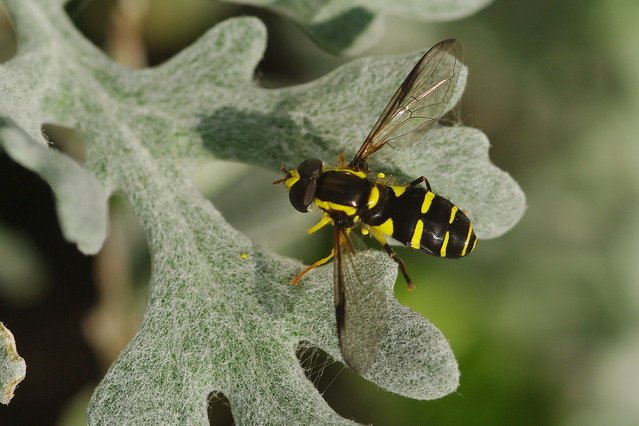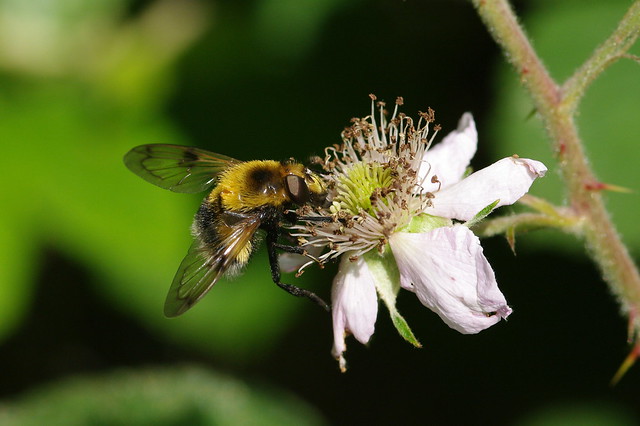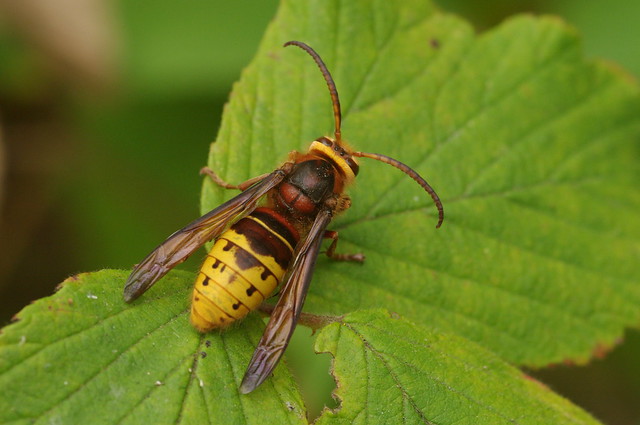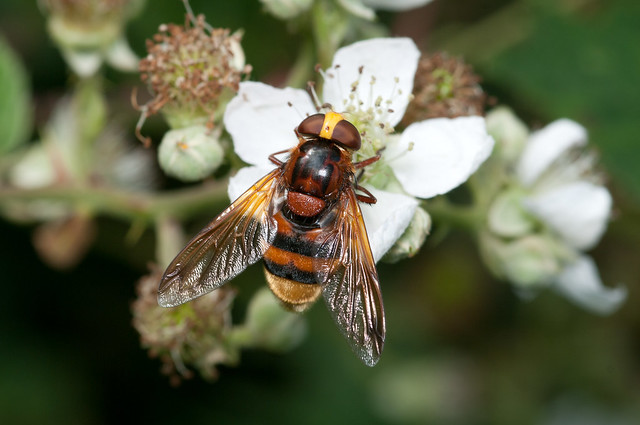One group of insects which is more dishonest than most is the hoverfly family, with the majority of the species in the UK pretending to be something they're not. One of the commonest targets for mimicry are the social wasps, who advertise their powerful stings with bold yellow and black marking and consequently are left well along by most predators.
To human eyes the accuracy of the imitation varies significantly, have a look at the picture of a common wasp below and see how well you think the hoverflies beneath it have done in their attempts to copy it.


Chrysotoxum cautum, not a bad effort

The Dead Head fly Myathropa florea, another strong contender

Xanthogramma pedissequum, perhaps a bit too jazzy?

The Sun-fly Helophilus pendulus, going freestyle on the thorax
As you can see from just the four examples above, there is a huge amount of variation even amongst species attempting to copy the same template. Why is this? Surely to garner the greatest protection, the mimic should have evolved near perfect imitation of the target species? Various hypotheses have been suggested, perhaps to non-human eyes the imitation is more exact, or maybe evolution is still in progress. Another suggestion is that some species may display elements of several different target species to maximise their protection. In most cases a combination of the above and other factors are likely to play a part.
Whatever the reason for imperfect mimicry, there are some species which show a very good similarity to their targets, a small selection is shown below.


A Honey Bee and a Drone Fly


The bumblebee mimicking hoverfly Volucella bombylans and the Common Carder Bee


A Hornet and a Hornet Hoverfly, although the differences may be readily apparent in the stationary insects, in flight they are remarkably similar.